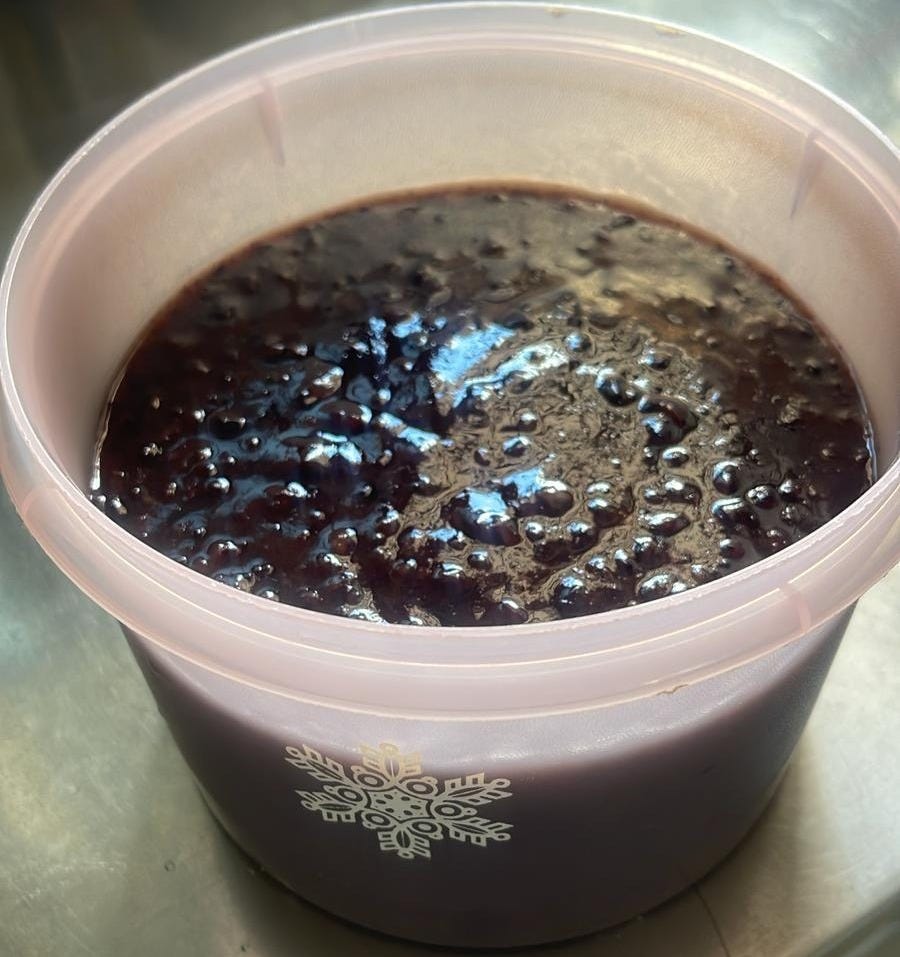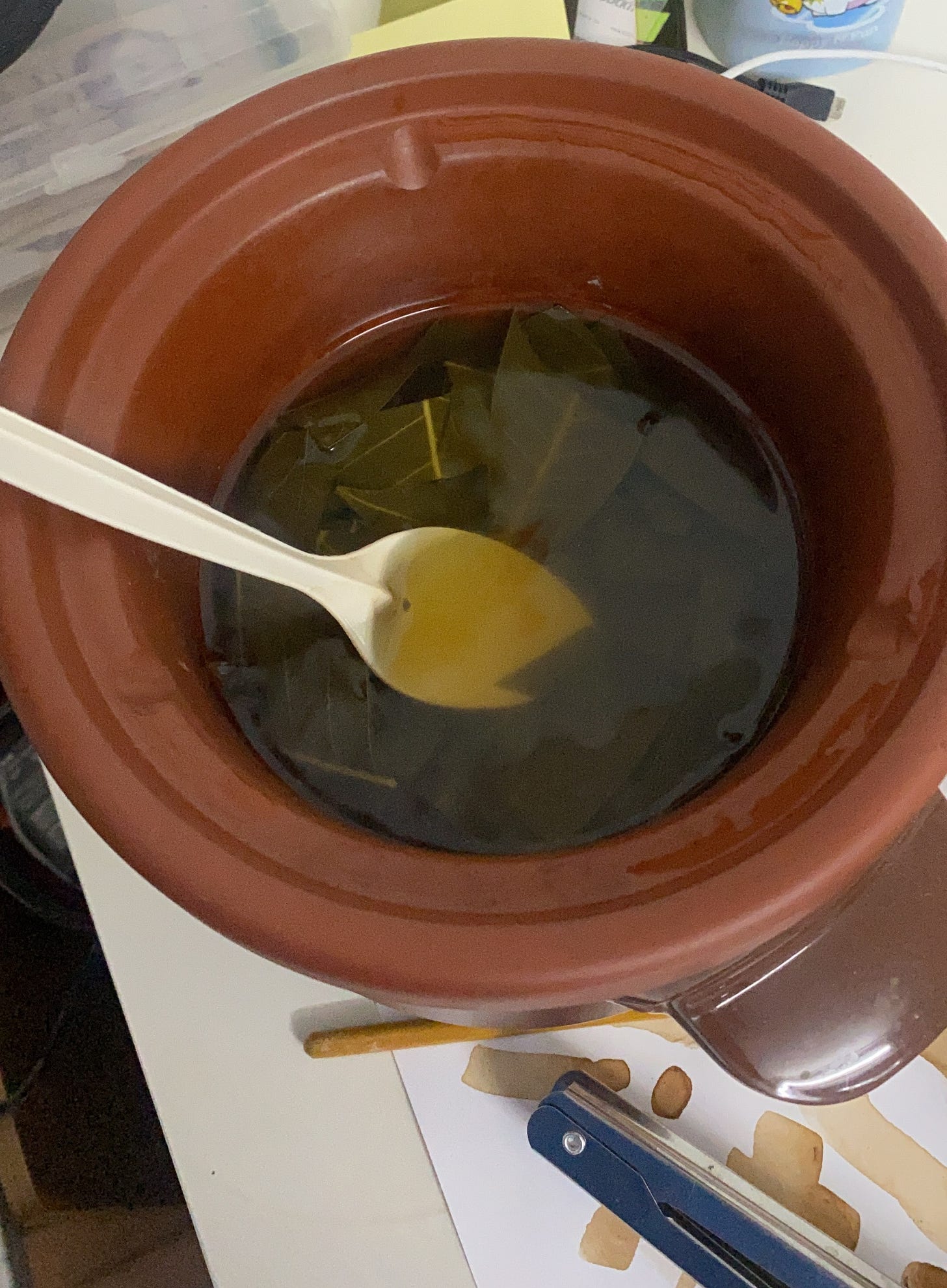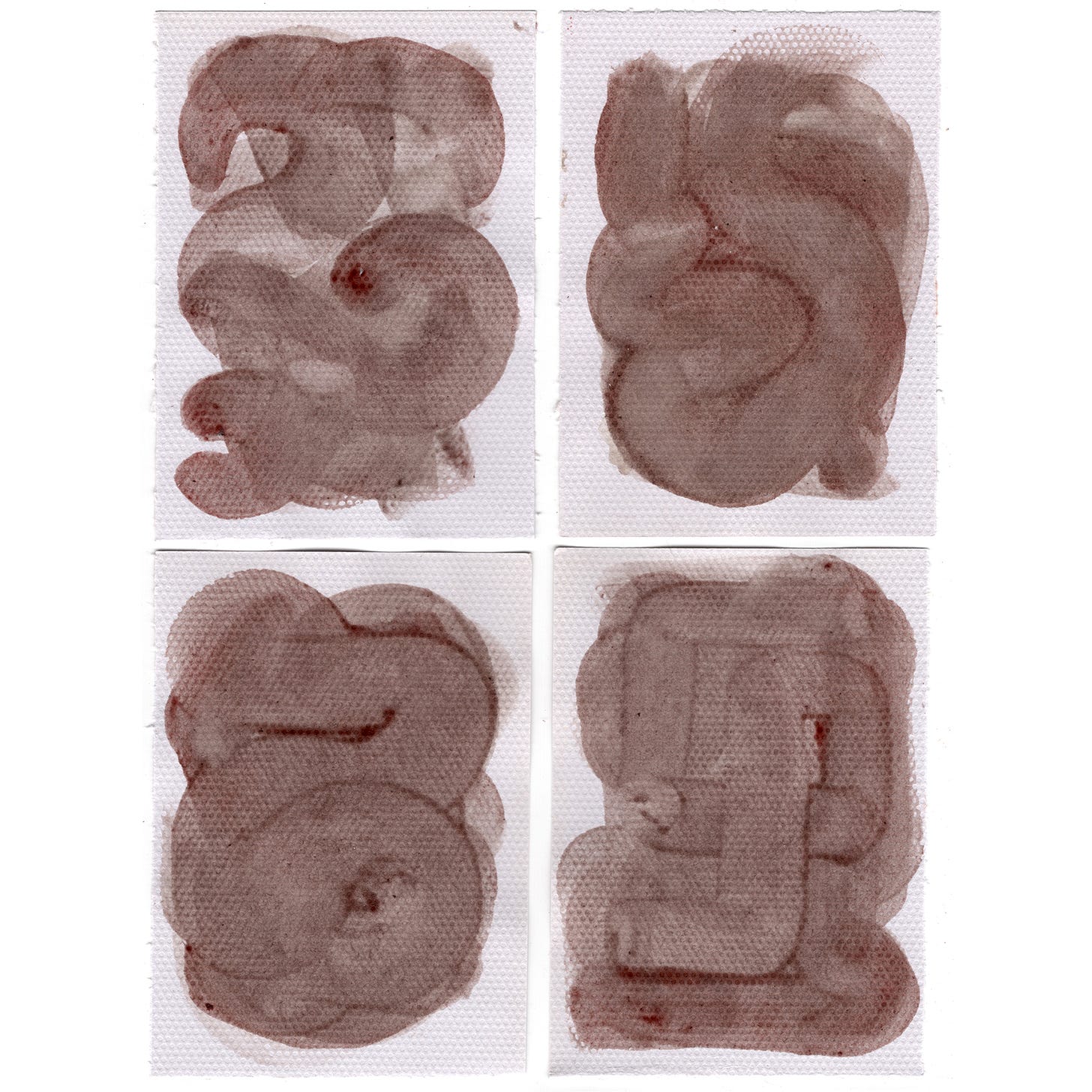Hello folks,
We have been cooking black glutinous rice non-stop over the past couple of weeks. A strange way to begin this letter, but it is because of the “Grain to Paint” workshop with @thetheatrepractice held over the last two Sundays.
A side effect from running a workshop on rice is the bottomless cooked tubs of black glutinous rice. A call for more pulut hitam dessert to be made, consequentially feeding the pulut hitam fans and friends!
Ink from cooking black glutinous rice grains is initially reddish-brown, turning gray after a few days. But its response when modifiers are added gives interesting and fun results -
The purple is a result of the ink responding to the addition of alum powder, and the lighter pink is the ink with lemon juice. Alum also stabilizes the ink, affording it higher durability to the passing of time.
Working with natural colours, especially from plants, is a very living process. We are still training our attention to stay present and notice the nuances. You can say each material has a personality of their own - its own preferred timings for harvest, stages of transformations, and preferred way to be worked with. The phrase of “listening to the material”, can be explored through one’s senses, though not just through the visual. Many times, we rely on touch to understand what the material is like, and the smell as an indicator of how the material changes as we continue to work with it.
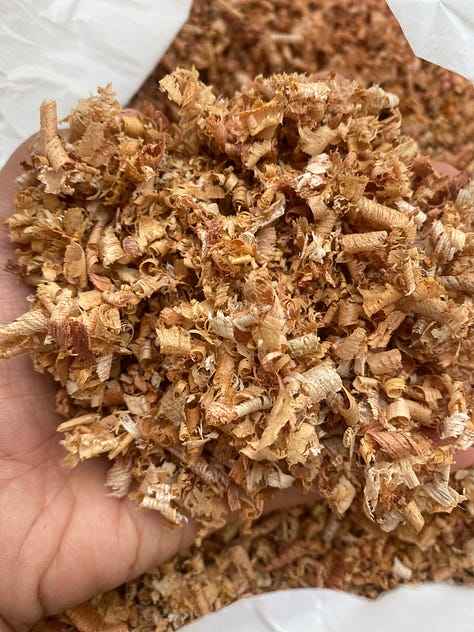

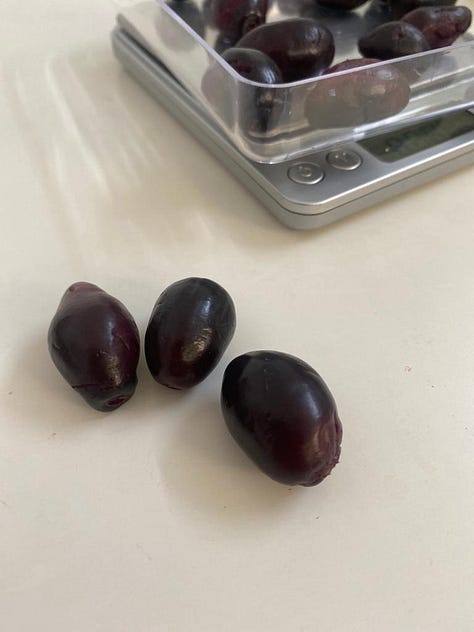
These are some of our shared reflections as we interact and learn from the plants we receive:
Patience is the toughest part
After many (failed) experiments, we learned that impatience often leads to weak colours and overly watery mediums, with certain exceptions of highly pigmented flowers or fruits. It can become a waiting game to reduce the ink in your pot to a desirable concentration, making it the trickiest part of all.
We slowly test the colours often onto paper, until satisfied with the concentration of the liquid. When it comes to the process of making lake pigments from dye, a batch of weak dye would only result in paler pigments after precipitation - an irreversible process.
‘Failure’ or just another outcome?
There are definitely head scratching moments where inks we made were completely not what we expected. There are also moments where some of these inks poetically change with time, fading slowly into a light pastel colour, or surprising us when it drastically changes overnight.
While troubleshooting and slowly working through logical elimination could somewhat help to pinpoint the cause, the answers don’t necessarily show themselves immediately. Some factors at play could simply be the health of the plant, the environment (weather) or even the quality of the water used. In the meantime, we find it more important to have fun, or explore ways to adapt with the unexpected changes.
How to (not) pay attention
While there are general recipes online for colour making and categories of plant inks that one can pick up over time, following a recipe book too uniformly without paying attention to each plant's unique qualities can create unexpected results. Similar with cooking!
Some questions that we are training our senses to think along: Which part of the plant are you using? Is it soft, or tough and fibrous to the touch? Does it have a waxy surface, or does it ink readily when pressed between fingers?
Even small observations such as noting the differences between of boiling and simmering, can make affect your plant pigments. Not all plant colours are able to handle heat, and may quickly degrade in the process.
The relationship with a plant does not come to an end once we have extracted colour successfully. Perhaps give it another try. Just like making a new friend, something new about the plant may present itself to you! Craft is always a process where there is always room to intentionally make more room for improvement :)
Upcoming Public Events:
We have a couple of public events coming up in May! Do come and join us if you’d like. :)
Talk on Plants and Lake Pigmentation
ArtScience Museum
11 May, 2pm to 315pm
We will be sharing about some of the memorable inks and pigments we have made over the years, how we encountered those plants, and what currently motivates our practice with locally-found natural colours.
There will also be a small hands-on activity for participants to try mulling paints with plant pigments.
Brickland Green Festival 2025
Next to Keat Hong Food Centre and Market
17 May, 9am to 1pm
We will be running a painting booth at this festival, with lots of different types of activities going on for a special mural reveal in the neighbourhood. This is a family-friendly event!
Thanks for reading all the way! Hope to see you around too.
Masak on,
Shirin and Liz




